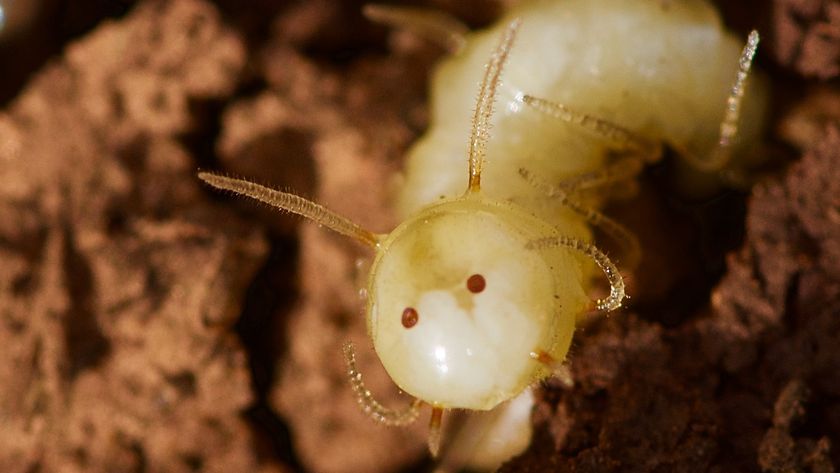Insect Scourge: Two New Species Invade U.S. Every Year
Less than an inch long with white spots on its back and antennae longer than its body, the Asian longhorn beetle would seem benign scuttling along the forest floor. But the plant-eating insect leaves behind a trail of woody carnage.
Every year, exotic insects like the Asian longhorn beetle and the emerald ash borer, aka the Green Menace, kill millions of trees across the United States. And every year inspectors intercept a few new would-be invaders at the nation’s ports of entry — but they can’t stop every single one.
Now researchers are trying to get a step ahead of the insect influx by quantifying the rate of invasion and pinpointing Los Angeles and New York area ports as insect entry hot spots. [Image Gallery: Invasive Species ]
National number
Each year, about two exotic, forest-dwelling insect species take hold in the United States, according to a new paper published online Oct. 1 and to set appear in a forthcoming print issue of the journal Biological Invasions by Frank Koch of North Carolina State University and four co-authors. To calculate that number, the team developed a computer model that incorporated historical data on foreign trade, insect invasions and interceptions at U.S. ports.
Not every one of those incoming insects is likely to wreak havoc on U.S. forests, but taking a cue from the ecological literature the team assumed that one in 10 are. "You would expect to see a significant forest insect species [become established here] approximately every five to six years," Koch said, and that's right in line with the historical record. "We've seen four major forest insect pests over the past 25 years."
That rate may not seem especially high, but even a single species can be devastating. Take the emerald ash borer, a jewel-toned beetle native to Asia and Russia that was first identified in Michigan and Ontario in 2002. It has since spread to at least 15 U.S. states, including its latest conquest this summer — Tennessee. Feeding larvae have girdled and killed tens of millions of ash trees, and damages could top $20 billion, according to the U.S. Department of Agriculture.
Sign up for the Live Science daily newsletter now
Get the world’s most fascinating discoveries delivered straight to your inbox.
Urban breakdown
To find out exactly where forest pests are likely to enter the United States, Koch's team examined data for more than 3,000 urban areas. Insects often arrive concealed in wood products or packing material, and the researchers accounted for the likelihood that various imported products harbor forest pests, their regions of origin, their points of entry into the country and their final destinations.
The team identified the Los Angeles-Long Beach-Santa Ana region as the top point of entry, estimating that a new insect invader becomes established there every four or five years. New York-Newark was second, with a new invader settling in every eight or nine years, then Houston with one every 13 to 15 years. Most other urban areas had much lower rates.
Koch doesn't expect the flood of insects to slow down anytime soon, and hopes his results will help direct prevention resources where they can do the most good. Trade with Asia is predicted to boom, so port authorities should be increasingly vigilant for insect hitchhikers from that region. Since West Coast ports have the biggest share of Asian trade, Koch predicts forest-insect establishments there to rise over the next decade. East Coast ports have more commerce with Europe, and he expects new establishments there to remain roughly stable.
Another consideration is whether a major tool for preventing insects from entering the country is sufficiently effective. In 2006, the United States adopted international standards known as ISPM15 (International Standards for Phytosanitary Measures Guidelines for Regulating Wood Packaging Material in International Trade). The standards require all imported wood products and packing material to be fumigated or heat-treated.
"There have been studies that have shown that compliant wood still can have live insects," Koch said. "The evidence is not there yet to show that these standards have made a big dent."
Just when or where the next devastating invader may strike, no one knows, but "the one that gives people the most shivers," according to Koch, is the Asian gypsy moth.
Since 1991, several small populations have been spotted and quickly snuffed out in the Pacific Northwest and North Carolina. Unlike European gypsy moths, which have been munching away at East Coast forests for more than a century, female Asian gypsy moths can fly. If the species gains a foothold in the United States, managers fear the pests could spread quickly and far, leaving millions of acres of defoliated and dead trees behind.












